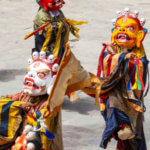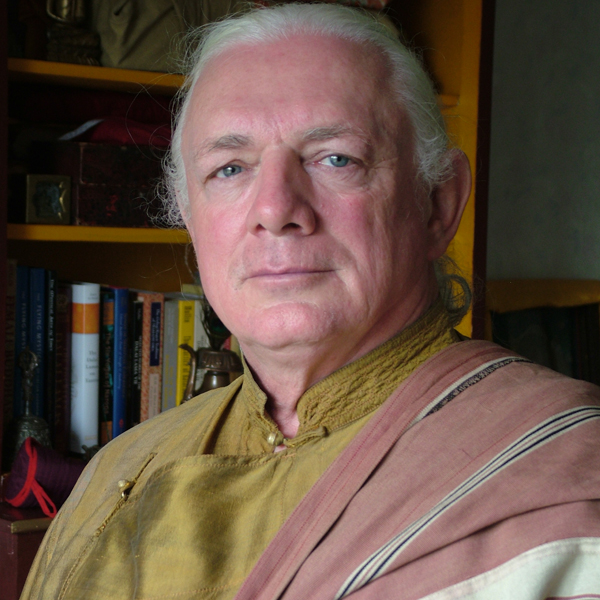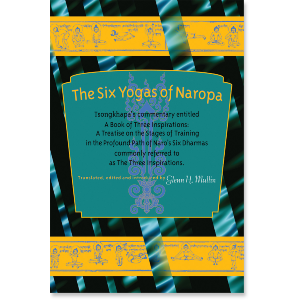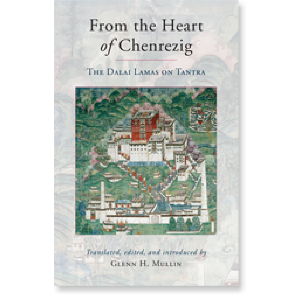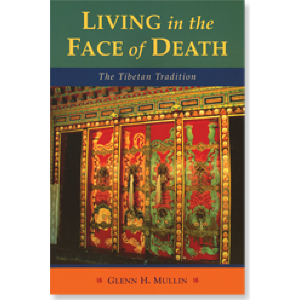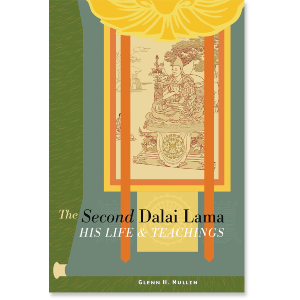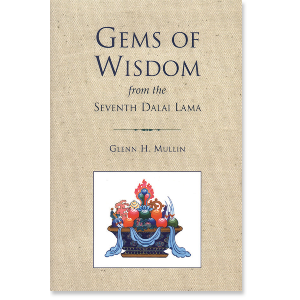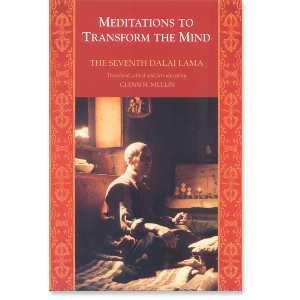| The following article is from the Spring, 1989 issue of the Snow Lion Newsletter and is for historical reference only. You can see this in context of the original newsletter here. |
Life in a Tibetan Monastery in Exile
By Hilary Shearman
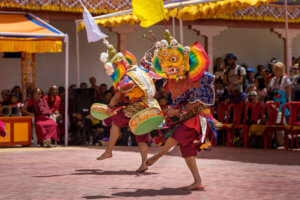
The tour of eight Drepung Loseling monks, Sacred Music, Sacred Dance completed its seventh successful month of performances in North America and continued for another month and a half on before heading for Europe. The lamas' performances have created a tremendous surge of interest in the Dharma and in Tibet.
How "Sacred Music, Sacred Dance" Tour Started
Three years ago Glenn Mullin and I were able to successfully coordinate a small tour of the Gyume Tantric College in Canada, in cooperation with Snow Lion Publications. As a result of this we were asked by Doboom Rinpoche of Tibet House, New Delhi, if we would consider doing something else, on a larger scale.
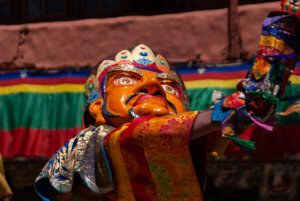
Both Glenn and I were excited at the prospect and decided that the rich tradition of sacred dance was something as yet unknown to western audiences. With that in mind we made a quick tour of some of the great monasteries of Tibet, now settled in Karnataka, South India.
Celebrating Losar at Tibetan Monasteries
Our timing was perfect, as being Losar, Tibetan New Year, many of the monasteries have elaborate dance rituals to send off the old year and herald in the new with auspicious fanfare. We were able to witness an amazing variety of dance styles and costuming, all accompanied by the deep blasts of the long horns and shimmering of cymbals, common to all the rituals.
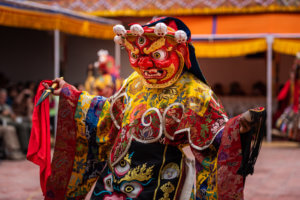
Choosing Drepung Loseling
In the final outcome, none of those monasteries which we had visited were chosen, but considering all the possibilities, the multi-faceted styles of Drepung Loseling seemed the most appropriate, and perhaps due to Doboom Rinpoche's devotion to his own monastic tradition, this group was selected.
Creating Foster/Sponsorship for the Monks
One of the most beneficial side effects of the tour has been the large number of people who have agreed to foster-sponsor a young monk from Drepung Loseling monastery. We set in process a scheme whereby anyone wishing to write to a young monk and share in the responsibility of his daily welfare could send a donation directly to the monastery, in the amount of $15 or $20 per month, depending on the age of the monk.
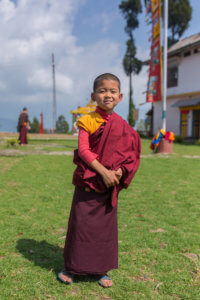
Arriving to the Monastery
My arrival at the monastery was unannounced. Telephone calls from Delhi had been ineffective and on my arrival at the tiny airport of Belgaum I hired a taxi to drive me to Mundgod, three hours away. We bounced along at a stately pace of fifty kilometers in that wonderful legacy of British India, the Ambassador, and honked and swerved to avoid the alarming number of trucks, ox-carts, tractors and hay-wagons one encounters on rural Indian highways.
Finally the taxi turned onto a fairly deserted road and after few kilometers we could see the traditional carved and painted Tibetan archway through which one passes into Tibet. This transition is remarkable; the landscape is the same, but now four story Tibetan temples, with golden deer and Dharmachakra adorning the roofs, appear as if in a dream. Prayer flags flutter in the soft breeze and the narrow road is crowded with monks walking, or riding bicycles, their maroon and saffron robes changing the colorscape dramatically.
Though unannounced, I was immediately welcomed, my luggage taken from the taxi and I was led upstairs to the main office of the administrator, Dakpa Topgyal. We became a good working team right away and decided we should photograph as many young monks as possible for the next few days. We started quite early the next morning and having decided on the coolest place to set up, (the temperature would be reaching 40-42 degrees Celsius by mid afternoon), we started the process.
400 Photos in Two Days
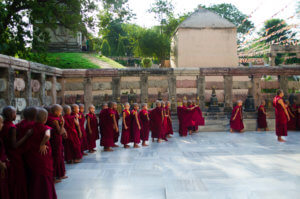
Naturally, a photo to any child is fascinating, but Tibetans, in particular, love to have their photos taken. It is a cross between a thrill and a threat, somehow exciting, and when the camera actually spits out the photograph, that seals the experience. It was one of the most joyful times of my life, seeing all these quite solemn little faces breaking into a look of sheer incredulity as it took place.
The Tibetan smile is renowned the world over, and to have the privilege of capturing four hundred of them over the next two days was like being given a magical elixir.
Daily Life at the Monastery
During the course of our activities the daily life of the monastery was progressing all around us.
There were nine hundred and fifty monks in Drepung Loseling, two-thirds of whom are under the age of twenty.
Every morning they rise before dawn, and assemble outside the main prayer hall, sipping their first cup of Tibetan tea for the day. At the sound of the gong signalling sunrise, they all move swiftly into the temple aisles and the daily prayers begin.
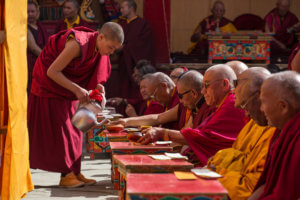
Halfway through the sound of small, pounding feet can be heard, as the very young monks who have been assigned tea duty for the day run back and forth between the main kitchen and the temple, wildly swinging large teapots. At this time each monk is also served with a large, flat fried Tibetan bread, which is breakfast.
During the rest of the morning the young monks attend school where they are taught mathematics, English, Tibetan and science subjects, the older monks study the five main divisions of Buddhism, according to age and in a systematic style. Lunch follows at 11:30, which is more Tibetan tea, and another flat round bread.
The hot hours of the afternoon at this time of the year are for rest and personal chores, followed by more studies. Later on, when the rains come in June, the routine is much different, with all the monks being required to work in the fields, tending the crops of maize and rice. This is for six hours a day, until Sept.
Cultivating the Land
The rice crop is mostly all consumed by the monastery, but the maize is their only cash crop which is sold as animal fodder. The money is one of the main supports for the institution, and a failed crop (which has happened in recent years due to drought), can be disastrous.
When the Tibetans were given this land by the Indian government it was wild, jungle-type terrain. The monks had to clear the land and prepare it for cultivation. Many wild animals lived here, and those years were exceptionally hard. They are still bothered by wild pigs, and one of the jobs the monks dislike the most is to stay up all night, guarding the maize from these voracious creatures. The monks still have to do their other work as well so it becomes very exhausting.
Reciting Buddhist Texts and Tibetan Debate
Evening comes and after their daily dinner of rice and dal and Tibetan tea, there are more prayers or chanting and recitation of scriptures.
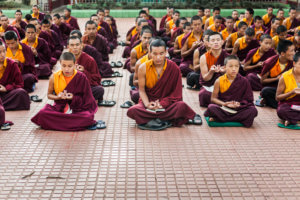
Everywhere the sound of shrill little voices can be heard, reciting text by memory, which is a fundamental practice for all monks.
By mid-evening when the heat subsides, the debate courtyard starts to fill up, and the subjects which have been studied that day, are tested and tried in heated debate. The sounds of whoops and shrieks and hard hand claps accompany this mass of voices, challenging each others' understanding of the intricacies of Buddhism.
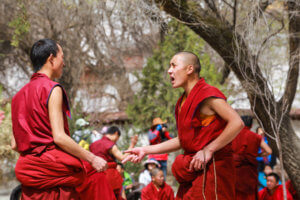
Monastery Hardships
The life in the monastery is hard, and there is serious deprivation in terms of diet, medicine, facilities and general hygiene. Disease is very hard to contain, with a variety of skin problems, intestinal infestations and, more seriously, 5% of the monks suffer from tuberculosis, for which they have to receive constant medical attention.
Many monks do not have proper rooms: they inhabit old cow stalls or makeshift huts leaning up against other buildings for support. Walls are bamboo covered with plastic; beds, rough wooden platforms. This has come about due to the enormous quantity of monks and young boys who keep arriving from Tibet.
The existing facilities were constructed by grants from the government to provide for two hundred and thirty monks. Now there are nine hundred and fifty.
As Dakpa said,
There is a Tibetan proverb which says, 'Now I must stand on my own two feet, even though my belly is heavy and swollen.'
As an administrator, he is keenly aware of the shortcomings of the existing facilities.
Performing Sacred Music, Sacred Dance
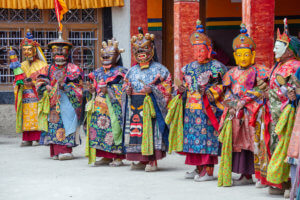
The monks who are performing Sacred Music, Sacred Dance are also keenly aware of the plight and conditions of their fellow monks in South India.
Sharing the Dharma
Their amazing tenacity in maintaining a grueling pace on the road, travelling for hours in a small van with large quantities of equipment, constantly being on demand, yet never failing to have a smile or a word of encouragement for anyone who wishes to talk to them,
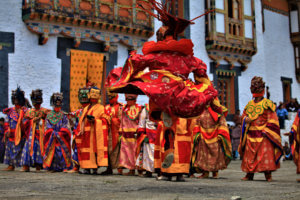
can only be fueled by the desire to help their monastery survive, so that those who are able to leave their strife-torn homeland will be able to find a real refuge in the Three Jewels, to have the freedom to study and practice the Dharma for the benefit of all sentient beings.
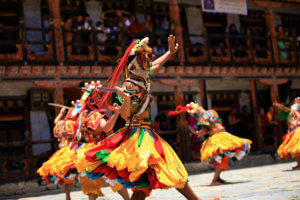
Giving Support to the Monks
Anyone who would like to help the monastery in some way, like:
- Foster/sponsoring a young monk
- Contributing to the Building or Medical Fund
For more information contact: Canada-Tibet Friendship Society

